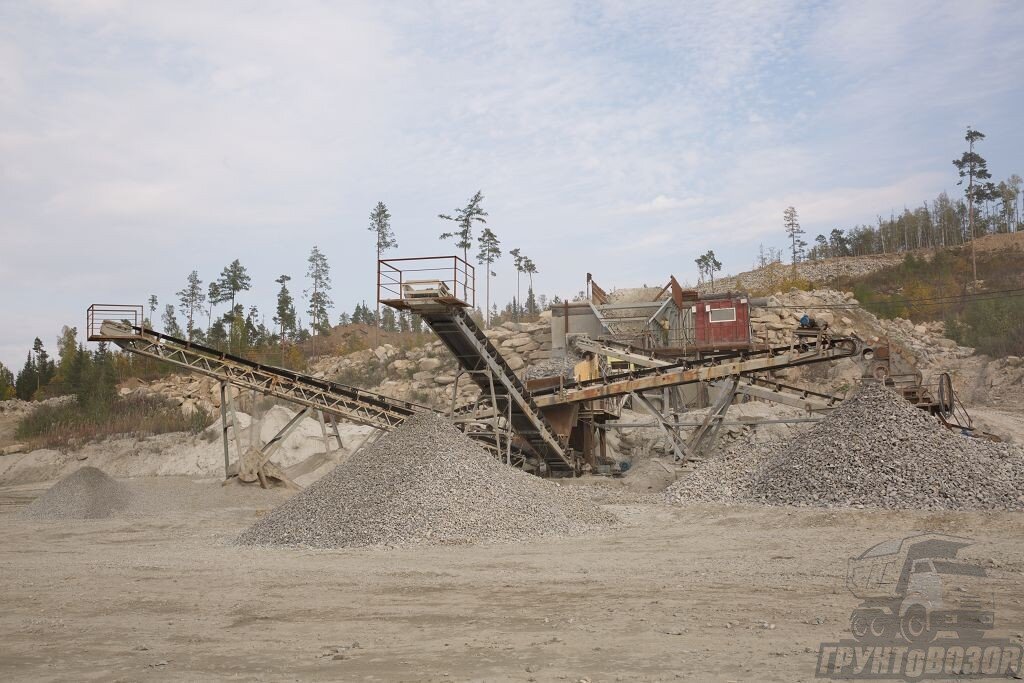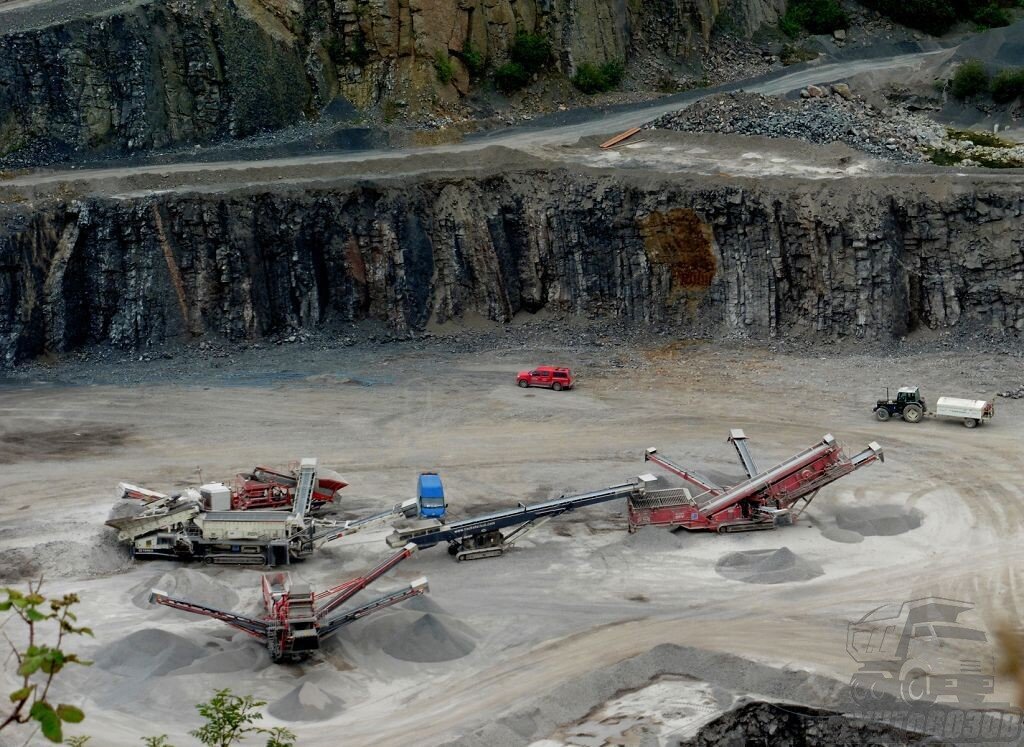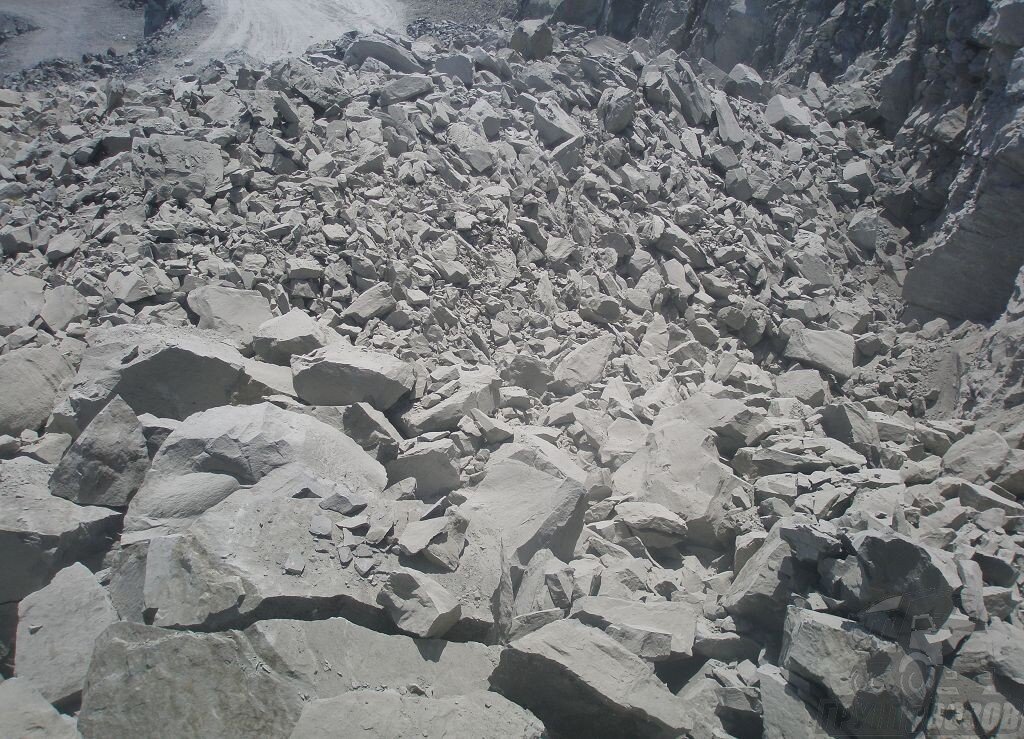In the same article, we will tell you about the stages of gravel production, such as crushing and sorting.


Crushing stage
After the rock is mined, it is loaded into quarry dump trucks, which transport it to the plant’s receiving bin. From there, the stones are sent to crushers – special devices that ensure a uniform supply of raw material to the factory installations (about which – further down). In the production of gravel, plate and vibratory crushers are usually used.
The original rock pieces have a size of 500 to 1200 mm, while the size of the particles in the finished gravel batch varies from 5 to 120 mm. This means that the stones decrease in size during crushing, sometimes by a factor of hundreds. This result cannot be achieved in a single approach. Therefore, crushing is usually carried out in 2-4 stages.
Depending on the size of the stones at the output, the following types of crushing are distinguished:
- Large (up to 300 mm)
- Medium (up to 100 mm)
- Fine (up to 40 mm)
Modern production combines crushing with screening – that is, sorting.
Therefore, each stage of crushing includes:
Pre-screening. During this process, large rock pieces are separated from the smaller ones that are not subject to crushing. More about screening will be discussed below.
The actual crushing.
Only those pieces of rock that actually require grinding at a certain stage actually enter the crusher. It is irrational to run material through the crusher that already meets the specified size requirements.


This passage describes the process of producing crushed stone, specifically 5-20 fraction stone. The process involves several stages of crushing and sorting, starting with large chunks of rock that are separated and sent to a series of crushers. The largest chunks are first sent to a scalping screen to separate oversize material, which is then sent to a secondary crusher for further reduction. The process continues with several more stages of crushing and sorting, ultimately producing a final product with a size range of 5-20 mm.

The passage also discusses various types of crushers used in the process, including jaw crushers, cone crushers, impact crushers, and rotary crushers. Each type of crusher has its own advantages and disadvantages, and they are used at different stages of the process depending on the desired output. Jaw crushers are typically used for coarse crushing, while cone crushers are used for medium and fine crushing. Impact crushers and rotary crushers are used for fine crushing and shaping, and they are often used in the final stages of the process to produce a cubical shape.

Overall, the passage provides a detailed description of the process of producing crushed stone, from initial crushing to final sorting and shaping. It also discusses the various types of crushers used in the process and their advantages and disadvantages.

Sorting stage
The crushed rock from the crushers passes through vibrating screens, also known as gyratory screens. They got their name due to the characteristic noise they produce while working. The process of sorting the crushed rock is called grading.
Sorting can be:
Pre-screening
This sorting is done before crushing to separate the material that does not require crushing and the non-conformers.
Inspection
This sorting is done after crushing. During this process, stones that require further crushing are separated.
Product
Here, the crushed rock is divided into fractions for sale.
Each screen consists of a system of screens with different diameters. The higher the screen, the larger the diameter. For example, when producing a 5-20 fraction, a screen with a 5 mm lower screen and a 20 mm upper screen would be used.
It should be noted that not all fractions can be produced on the same equipment. For example, a screen intended for a 5-20 fraction cannot produce a 5-10 fraction, as the sorting requires a screen with 10 mm cell diameter. This is why most manufacturers offer either one or the other fraction, but not both together.


Standard and non-standard fractions are distinguished. Standard fractions are in high demand and are produced in large quantities, while non-standard fractions are specific and are produced only on request.
According to GOST 8267-93 (Shchebny and Gravel from Dense Rock for Construction Works), the following standard fractions of shchebny are distinguished:
- 3-8 (European shchebny)
- 5-10
- 5-20
- 10-20
- 20-40
- 25-60
- 20-70
- 40-70
The fraction determines the area of application of shchebny. European shchebny 3-8 is used in the production of asphalt surfaces of high smoothness. Fractions 5-10 and 5-20 are used as fillers in various asphalt and concrete mixtures. Fractions 20-40 and 40-70 are popular and are used in the construction of roads and foundations.
The most specific of these fractions is 25-60, which is only used in the field of railway construction. Shchebny 25-60 is used for laying the ballast layer on railway tracks.
Non-standard fractions include:
- 10-15
- 15-20
- 70-120 (80-120)
Smaller fractions 10-15 and 15-20 are used for making building mixes. Fraction 70-120 often represents a coarsened shchebny 40-70. This means that the main mass of particles has a diameter of 40-70 mm, but among them there are also large particles up to 120 mm in diameter. Shchebny of this fraction is used in construction and design work. It is used for decorating fences, pools, water bodies, and also for building foundations.


The full version of this article can be found on this page.




